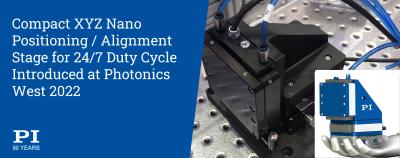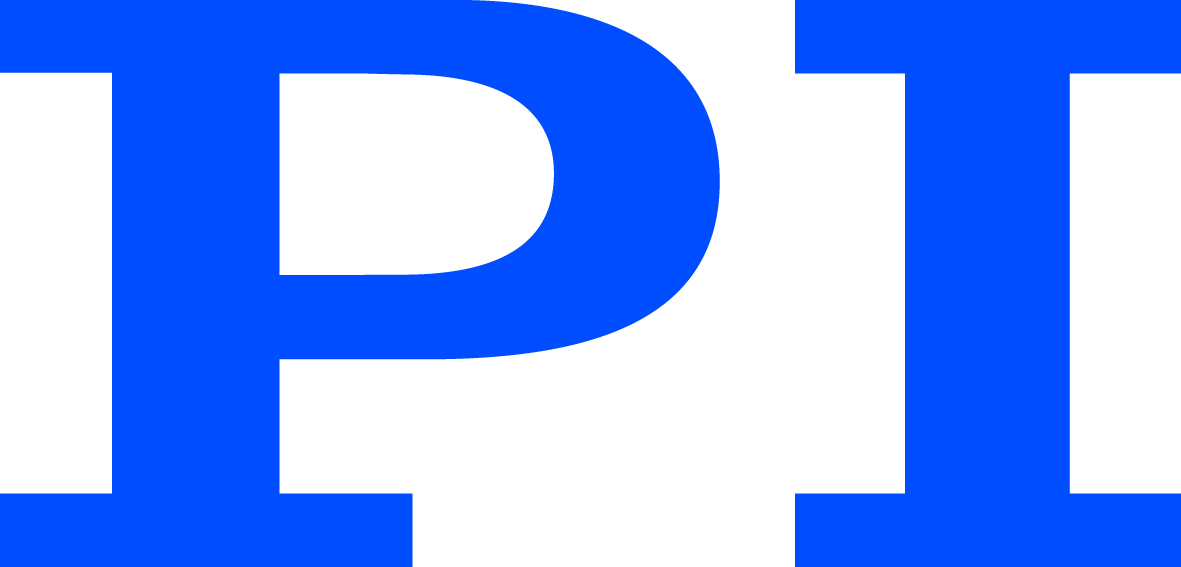
PI recently introduced a new, compact XYZ Nanopositioning Stage, based on air bearing guide technology and closed-loop voice-coil, direct-drive linear motors, at the 2022 Photonics West, the world’s largest photonics conference.
The compact 3-axis linear nanopositioning stage is based on PI’s A-142 mini air bearing linear slide and suited for high precision, high-dynamics positioning, scanning and alignment applications in fields such as fiber optics, photonics, semiconductors, micro-mechanical systems, etc.
Based on a friction-free and wear-free precision guiding and motion system with a high dynamics direct-drive linear motor, this multi-axis linear translation stage excels with a 0.4 inch travel range (10mm) in all three linear degrees of freedom, while maintaining a compact footprint of only 3.1x3.5 inch (80x90mm).
The vertical axis is equipped with a counterbalance to maximize the performance and dynamics of the Z-axis drive and compensate for gravitation forces. Position accuracy and repeatability of the closed-loop XYZ nanopositioning stage is guaranteed by integrated linear encoders with 5nm resolution and advanced multi-axis motion controller with EtherCat® connectivity. The controller also comes with fast alignment software for photonic components of optics assemblies.
The compact XYZ stage is designed for loads of a few pounds, but PI also provides a large variety of high load motorized XYZ precision positioning stages with high force motors for long travel applications in industrial automation and scientific research.
At the other end of the spectrum, when sub-nanometer precision is required and short travel ranges are sufficient, 3-axis piezo nanopositioning stages are also available.
Contact Details
Related Glossary Terms
- degrees of freedom
degrees of freedom
Number of axes along which a robot, and thus the object it is holding, can be manipulated. Most robots are capable of maneuvering along the three basic Cartesian axes (X, Y, Z). More sophisticated models may move in six or more axes. See axis.
- linear motor
linear motor
Functionally the same as a rotary motor in a machine tool, a linear motor can be thought of as a standard permanent-magnet, rotary-style motor slit axially to the center and then peeled back and laid flat. The major advantage of using a linear motor to drive the axis motion is that it eliminates the inefficiency and mechanical variance caused by the ballscrew assembly system used in most CNC machines.

